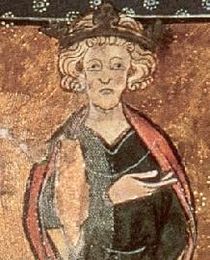 On this day in 1066, Anglo-Saxon king of England and saint, Edward the Confessor, died in London at the apporoximate age of 62. Born c. 1003 in Islip, Oxfordshire, England, the son of Æthelred the Unready and Emma of Normandy. Edward’s reign began in 1042 on the death of his half brother Harthacanut; the king of Denmark and England was the son of Cnut the Great and Emma of Normandy, Edward’s mother. His reign restored the rule of the House of Wessex after the period of Danish rule since Cnut had conquered England in 1016 but marked the continuing disintegration of royal power in England and the advancing power of the earls. Edward married Edith of Wessex but the union was childless. When Edward died in 1066 he had no son to take over the throne and conflict arose as three men claimed the throne of England. His nearest heir would have been his great nephew Edgar Ætheling who was 14 at the time. Edward made a deathbed bestowal of the crown on Harold Godwinson, the brother of Queen Edith. The Viking king, Harald III of Norway based a claim to the throne of England on an agreement supposedly made by Magnus and Harthacnut, which stated that if either died, the other would inherit the deceased’s throne and lands. When Harthacnut died, Magnus assumed the crown of Denmark, but did not press his claim on England, allowing Edward to take the throne. William, Duke of Normandy (William the Conqueror), whose great aunt Emma was Edward’s mother, claimed that Edward promised him the throne upon Edward’s death. The resulting conflict led to the Norman Conquest and the subsequent influence of Norman-French culture on England. Osbert de Clare, a monk of Westminster, represented Edward as a holy man, reported to have performed several miracles and to have healed people by his touch. Edward had a stone abbey built at Westminster Abbey which became the traditional place for English and British royalty coronations and burials.
On this day in 1066, Anglo-Saxon king of England and saint, Edward the Confessor, died in London at the apporoximate age of 62. Born c. 1003 in Islip, Oxfordshire, England, the son of Æthelred the Unready and Emma of Normandy. Edward’s reign began in 1042 on the death of his half brother Harthacanut; the king of Denmark and England was the son of Cnut the Great and Emma of Normandy, Edward’s mother. His reign restored the rule of the House of Wessex after the period of Danish rule since Cnut had conquered England in 1016 but marked the continuing disintegration of royal power in England and the advancing power of the earls. Edward married Edith of Wessex but the union was childless. When Edward died in 1066 he had no son to take over the throne and conflict arose as three men claimed the throne of England. His nearest heir would have been his great nephew Edgar Ætheling who was 14 at the time. Edward made a deathbed bestowal of the crown on Harold Godwinson, the brother of Queen Edith. The Viking king, Harald III of Norway based a claim to the throne of England on an agreement supposedly made by Magnus and Harthacnut, which stated that if either died, the other would inherit the deceased’s throne and lands. When Harthacnut died, Magnus assumed the crown of Denmark, but did not press his claim on England, allowing Edward to take the throne. William, Duke of Normandy (William the Conqueror), whose great aunt Emma was Edward’s mother, claimed that Edward promised him the throne upon Edward’s death. The resulting conflict led to the Norman Conquest and the subsequent influence of Norman-French culture on England. Osbert de Clare, a monk of Westminster, represented Edward as a holy man, reported to have performed several miracles and to have healed people by his touch. Edward had a stone abbey built at Westminster Abbey which became the traditional place for English and British royalty coronations and burials. 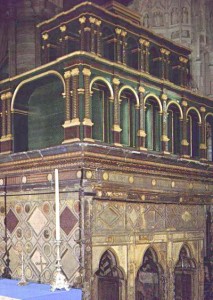
The Final Footprint – Edward is entombed in the Chapel of St. Edward the Confessor located behind the sanctuary in Westminster Abbey. Osbert went to Rome to advocate the cause for Edward to be declared a saint, successfully securing his canonization by Pope Alexander III in 1161. Edward is commemorated on 13 October by the Roman Catholic Church, the Church of England and other Anglican Churches. He is regarded as the patron saint of kings, difficult marriages, and separated spouses. From the reign of Henry II of England to 1348, he was considered the patron saint of England. During the reign of Edward III of England he was replaced in this role by Saint George, though Edward has remained the patron saint of the British Royal Family.Other notable Final Footprints at Westminster include; Robert Browning, Lord Byron, Geoffrey Chaucer, Oliver Cromwell, Charles Darwin, Charles Dickens, Edward The Confessor, Elizabeth I, George II, George Friederic Handel, James I (James VI of Scotland), Samuel Johnson, Ben Jonson, Charles II, Edward III, Edward VI, Henry III, Henry V, Henry VII, Richard II, Rudyard Kipling, Henry Wadsworth Longfellow, John Milton, Sir Isaac Newton, Laurence Olivier, Henry Purcell, Mary I, Mary II, Mary Queen of Scots, Thomas Shadwell, Lord Alfred Tennyson, Dylan Thomas, and William III.
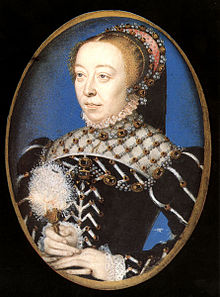 On this day in 1589, Italian noblewoman, as the wife of King Henry II, the Queen of France from 1547 until 1559, Catherine de’ Medici died at the age of sixty-nine, probably from pleurisy the Royal Château of Blois, Loir-et-Cher department, Loire Valley, France. Born in Florence, Republic of Florence, as Caterina Maria Romula di Lorenzo de’ Medici. The Medici family were at the time the de facto rulers of Florence: originally bankers, they came to great wealth and power by bankrolling the monarchies of Europe. The Medici produced four Popes of the Catholic Church, Pope Leo X (1513–1521), Pope Clement VII (1523–1534), Pope Pius IV (1559–1565), and Pope Leo XI (1605); two regent queens of France, Catherine and Marie (1600–1610); and, in 1531, the family became hereditary Dukes of Florence. Catherine’s father, Lorenzo II de’ Medici, was made Duke of Urbino by his uncle Pope Leo X. Her mother, Madeleine de la Tour d’Auvergne, the Countess of Boulogne, was from one of the most prominent and ancient French noble families; this prestigious maternal heritage was of benefit to her future marriage to a fils de France. As the mother of three sons who became kings of France during her lifetime she had extensive influence in the political life of France. For a time she ruled France as its regent. In 1533, at the age of fourteen, Caterina married Henry, second son of King Francis I and Queen Claude of France. Throughout his reign, Henry excluded Catherine from participating in state affairs and instead showered favours on his chief mistress, Diane de Poitiers, who wielded much influence over him. Henry’s death thrust Catherine into the political arena as mother of the frail fifteen-year-old King Francis II. When he died in 1560, she became regent on behalf of her ten-year-old son King Charles IX and was granted sweeping powers. After Charles died in 1574, Catherine played a key role in the reign of her third son, Henry III. Catherine’s three sons reigned in an age of almost constant civil and religious war in France. The problems facing the monarchy were complex and daunting. At first, Catherine compromised and made concessions to the rebelling Protestants, or Huguenots, as they became known. She failed, however, to grasp the theological issues that drove their movement. Later, she resorted in frustration and anger to hard-line policies against them. In return, she came to be blamed for the excessive persecutions carried out under her sons’ rule, in particular for the St. Bartholomew’s Day massacre of 1572, in which thousands of Huguenots were killed in Paris and throughout France. Some historians have excused Catherine from blame for the worst decisions of the crown, though evidence for her ruthlessness can be found in her letters. In practice, her authority was always limited by the effects of the civil wars. Her policies, therefore, may be seen as desperate measures to keep the Valois monarchy on the throne at all costs, and her patronage of the arts as an attempt to glorify a monarchy whose prestige was in steep decline. Without Catherine, it is unlikely that her sons would have remained in power. The years in which they reigned have been called “the age of Catherine de’ Medici”. According to one of her biographers Mark Strage, Catherine was the most powerful woman in sixteenth-century Europe.
On this day in 1589, Italian noblewoman, as the wife of King Henry II, the Queen of France from 1547 until 1559, Catherine de’ Medici died at the age of sixty-nine, probably from pleurisy the Royal Château of Blois, Loir-et-Cher department, Loire Valley, France. Born in Florence, Republic of Florence, as Caterina Maria Romula di Lorenzo de’ Medici. The Medici family were at the time the de facto rulers of Florence: originally bankers, they came to great wealth and power by bankrolling the monarchies of Europe. The Medici produced four Popes of the Catholic Church, Pope Leo X (1513–1521), Pope Clement VII (1523–1534), Pope Pius IV (1559–1565), and Pope Leo XI (1605); two regent queens of France, Catherine and Marie (1600–1610); and, in 1531, the family became hereditary Dukes of Florence. Catherine’s father, Lorenzo II de’ Medici, was made Duke of Urbino by his uncle Pope Leo X. Her mother, Madeleine de la Tour d’Auvergne, the Countess of Boulogne, was from one of the most prominent and ancient French noble families; this prestigious maternal heritage was of benefit to her future marriage to a fils de France. As the mother of three sons who became kings of France during her lifetime she had extensive influence in the political life of France. For a time she ruled France as its regent. In 1533, at the age of fourteen, Caterina married Henry, second son of King Francis I and Queen Claude of France. Throughout his reign, Henry excluded Catherine from participating in state affairs and instead showered favours on his chief mistress, Diane de Poitiers, who wielded much influence over him. Henry’s death thrust Catherine into the political arena as mother of the frail fifteen-year-old King Francis II. When he died in 1560, she became regent on behalf of her ten-year-old son King Charles IX and was granted sweeping powers. After Charles died in 1574, Catherine played a key role in the reign of her third son, Henry III. Catherine’s three sons reigned in an age of almost constant civil and religious war in France. The problems facing the monarchy were complex and daunting. At first, Catherine compromised and made concessions to the rebelling Protestants, or Huguenots, as they became known. She failed, however, to grasp the theological issues that drove their movement. Later, she resorted in frustration and anger to hard-line policies against them. In return, she came to be blamed for the excessive persecutions carried out under her sons’ rule, in particular for the St. Bartholomew’s Day massacre of 1572, in which thousands of Huguenots were killed in Paris and throughout France. Some historians have excused Catherine from blame for the worst decisions of the crown, though evidence for her ruthlessness can be found in her letters. In practice, her authority was always limited by the effects of the civil wars. Her policies, therefore, may be seen as desperate measures to keep the Valois monarchy on the throne at all costs, and her patronage of the arts as an attempt to glorify a monarchy whose prestige was in steep decline. Without Catherine, it is unlikely that her sons would have remained in power. The years in which they reigned have been called “the age of Catherine de’ Medici”. According to one of her biographers Mark Strage, Catherine was the most powerful woman in sixteenth-century Europe. 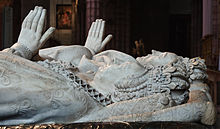
The Final Footprint – Because Paris was held by enemies of the crown, Catherine had to be buried at Blois. Diane, daughter of Henry II and Philippa Duci, later had her body moved to Saint-Denis basilica. In 1793, a revolutionary mob tossed her bones into a mass grave with those of the other kings and queens. Eight months after Catherine’s burial, Jacques Clément stabbed Henry III to death. At the time, Henry was besieging Paris with the King of Navarre, who would succeed him as Henry IV of France. Henry III’s assassination ended nearly three centuries of Valois rule and brought the Bourbon dynasty into power. The Cathedral Basilica of Saint Denis is a large medieval abbey church in the city of Saint-Denis, now a northern suburb of Paris. The building is of unique importance historically and architecturally, as its choir completed in 1144 is considered to be the first Gothic church ever built. The abbey is where the kings of France and their families were buried for centuries and is therefore often referred to as the “royal necropolis of France”. All but three of the monarchs of France from the 10th century until 1789 have their remains here. Other notable final footprints at St. Denis include: Clovis I (465–511), Childebert I (496–558), Arégonde (c.515–c.573), Fredegonde (Wife of Chilperic I of Neustria) (?–597), Dagobert I (603–639), Clovis II (635–657), Charles Martel (686–741), Pippin the Younger (714–768) and his wife Bertrada of Laon (726–783), Carloman I King of the Franks (c.751–771), Charles the Bald (823–877) (his brass monument was melted down during the Revolution) and his wife, Ermentrude of Orléans (823–869), Carloman (866–884), Robert II the Pious (972–1031) and Constance of Arles (c. 986–1032), Henry I (1008–1060), Louis VI (1081–1137), Louis VII (1120–1180) and Constance of Castile (1141–1160), Philip II Augustus (1180–1223), Louis IX (1214-1270), Charles I of Naples (1226–1285), king of the Two Sicilies (1266–85), Philip III the Bold (1245–1285), Philip IV the Fair (1268–1314) and his mother Isabella of Aragon (1247–1271), Leo V of Armenia (1342–1393), Louis XII of France (1462–1515), Francis I (1494–1547), Henry II (1519–1559), Francis II (1544–1560), Charles IX (1550–1574) (no monument), Henry III (1551–1589), also King of Poland (heart burial monument), Henry IV (1553–1610) and Marie de’ Medici, Louis XIII (1601–1643), Louis XIV (1638–1715), Louis XV (1710–1774), Louis XVI (1754–1793) and Marie Antoinette (1755–1793), Louis XVII (1785–1795) (only his heart; his body was dumped into a mass grave), and Louis XVIII (1755–1824).
#RIP #OTD in 1939 aviation pioneer who disappeared over the Pacific Ocean while attempting to become the first female pilot to circumnavigate the world, Amelia Earhart is declared dead in absentia aged 40
#RIP #OTD in 1942 photographer, model (for Edward Weston, Diego Rivera), actor, and revolutionary political activist, Tina Modotti died from congestive heart failure in Mexico City, aged 45. Panteón de Dolores in Mexico City
#RIP #OTD in 1956 actress and singer (“Mon Homme”), at one time the highest-paid female entertainer in the world, Mistinguett died in Bougival, France, aged 82. Cimetière Enghien-les-Bains, Île-de-France, France
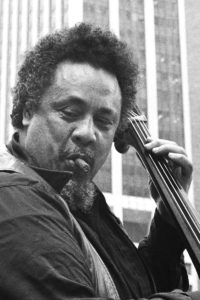 On this day in 1979, jazz double bassist, pianist, composer and bandleader, The Angry Man of Jazz, Charles Mingus died from ALS in Cuernavaca, Mexico, at the age of 56. Born Charles Mingus Jr. on April 22, 1922 on the US Army base in Nogales, Arizona. A major proponent of collective improvisation, in my opinion, he is one of the greatest jazz musicians and composers in history. His career spanned three decades.
On this day in 1979, jazz double bassist, pianist, composer and bandleader, The Angry Man of Jazz, Charles Mingus died from ALS in Cuernavaca, Mexico, at the age of 56. Born Charles Mingus Jr. on April 22, 1922 on the US Army base in Nogales, Arizona. A major proponent of collective improvisation, in my opinion, he is one of the greatest jazz musicians and composers in history. His career spanned three decades.
Mingus’ compositions continue to be played by contemporary musicians ranging from the repertory bands Mingus Big Band, Mingus Dynasty, and Mingus Orchestra, to the high school students who play the charts and compete in the Charles Mingus High School Competition. In 1993, The Library of Congress acquired Mingus’s collected papers—including scores, sound recordings, correspondence and photos—in what they described as “the most important acquisition of a manuscript collection relating to jazz in the Library’s history”.
The Final Footprint
His cremains were scattered in the Ganges River.
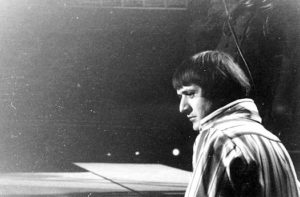 On this day in 1998, singer-songwriter, producer, actor, and politician Sonny Bono died in a skiing accident at Heavenly Mountain Resort near South Lake Tahoe, California, at the age of 62. Born Salvatore Phillip Bono on February 16, 1935 in Detroit. He came to fame in partnership with his second wife Cher, as the popular singing duo Sonny & Cher. He was mayor of Palm Springs, California from 1988 to 1992, and the Republican congressman for California’s 44th district from 1995 until his death in 1998.
On this day in 1998, singer-songwriter, producer, actor, and politician Sonny Bono died in a skiing accident at Heavenly Mountain Resort near South Lake Tahoe, California, at the age of 62. Born Salvatore Phillip Bono on February 16, 1935 in Detroit. He came to fame in partnership with his second wife Cher, as the popular singing duo Sonny & Cher. He was mayor of Palm Springs, California from 1988 to 1992, and the Republican congressman for California’s 44th district from 1995 until his death in 1998.
The United States Copyright Term Extension Act of 1998, which extended the term of copyright by 20 years, was named in honor of Bono when it was passed by Congress nine months after his death. Mary Bono (Sonny’s last wife) had been one of the original sponsors of the legislation, commonly known as the Sonny Bono Copyright Term Extension Act.
 Bono married his first wife, Donna Rankin, on November 3, 1954. They divorced in 1962. In 1964, Bono married Cher. In 1975 they divorced. Bono then married Susie Coelho in 1983, but divorced her within a year in 1984. He wed Mary Whitaker in 1986.
Bono married his first wife, Donna Rankin, on November 3, 1954. They divorced in 1962. In 1964, Bono married Cher. In 1975 they divorced. Bono then married Susie Coelho in 1983, but divorced her within a year in 1984. He wed Mary Whitaker in 1986.
In 1996, a Golden Palm Star on the Palm Springs, California, Walk of Stars was dedicated to him.
The Final Footprint
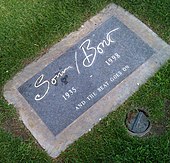
At Mary’s request Cher gave a eulogy at Sonny’s funeral. He was buried at Desert Memorial Park in Cathedral City, California. The epitaph on Bono’s headstone reads AND THE BEAT GOES ON. Other notable final footprints at Desert Memorial include; Frederick Loewe, Frank Sinatra, and Jimmy Van Heusen.
Have you planned yours yet?
Follow TFF on twitter @RIPTFF

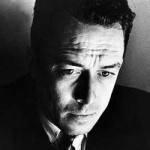 On this day in 1960, author, journalist, and philosopher, Nobel Prize laureate, Albert Camus died at the age of 46, in a car accident near Sens, in Le Grand Fossard in the small town of Villeblevin. Born 7 November 1913 in Dréan (then known as Mondovi) in French Algeria to a Pied-Noir family. His views contributed to the rise of the philosophy known as absurdism. Camus wrote in his essay “The Rebel” that his whole life was devoted to opposing the philosophy of nihilism while still delving deeply into individual freedom. Although often cited as a proponent of existentialism, the philosophy with which Camus was associated during his own lifetime, he rejected this particular label. In an interview in 1945, Camus rejected any ideological associations: “No, I am not an existentialist. Sartre and I are always surprised to see our names linked…” Though Sartre later accepted the association to existentialism. In 1949, Camus founded the Group for International Liaisons within the Revolutionary Union Movement after his split with Garry Davis’s Citizens of the World movement. The formation of this group, according to Camus, was intended to “denounce two ideologies found in both the USSR and the USA” regarding their idolatry of technology. Camus was awarded the 1957 Nobel Prize for Literature “for his important literary production, which with clear-sighted earnestness illuminates the problems of the human conscience in our times”.
On this day in 1960, author, journalist, and philosopher, Nobel Prize laureate, Albert Camus died at the age of 46, in a car accident near Sens, in Le Grand Fossard in the small town of Villeblevin. Born 7 November 1913 in Dréan (then known as Mondovi) in French Algeria to a Pied-Noir family. His views contributed to the rise of the philosophy known as absurdism. Camus wrote in his essay “The Rebel” that his whole life was devoted to opposing the philosophy of nihilism while still delving deeply into individual freedom. Although often cited as a proponent of existentialism, the philosophy with which Camus was associated during his own lifetime, he rejected this particular label. In an interview in 1945, Camus rejected any ideological associations: “No, I am not an existentialist. Sartre and I are always surprised to see our names linked…” Though Sartre later accepted the association to existentialism. In 1949, Camus founded the Group for International Liaisons within the Revolutionary Union Movement after his split with Garry Davis’s Citizens of the World movement. The formation of this group, according to Camus, was intended to “denounce two ideologies found in both the USSR and the USA” regarding their idolatry of technology. Camus was awarded the 1957 Nobel Prize for Literature “for his important literary production, which with clear-sighted earnestness illuminates the problems of the human conscience in our times”. 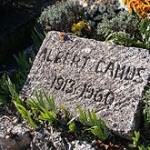
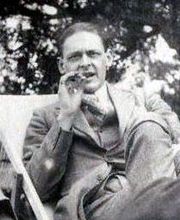 On this day in 1965, Nobel Prize winning poet and playwright, T. S. Eliot, died from emphysema in London at the age of 76. Born Thomas Stearns Eliot on 26 September 1888 in St. Louis, Missouri. In my opinion, one of the most important English-language poets of the 20th century. The poem that made his name, The Love Song of J. Alfred Prufrock is quite possibly a masterpiece of the modernist movement. Eliot’s other well known poems include; Gerontion (1920), The Waste Land (1922), The Hollow Men (1925), Ash Wednesday (1930), and Four Quartets (1945). He is also known for his seven plays, particularly Murder in the Cathedral (1935). The musical Cats, composed by Andrew Lloyd Webber, is based on Eliot’s collection of whimsical poems, Old Possum’s Book of Practical Cats. Eliot graduated from Harvard. Eliot married twice; Vivienne Haigh-Wood (1915 – 1947 her death) and Esmé Valerie Fletcher (1957 – 1965 his death).
On this day in 1965, Nobel Prize winning poet and playwright, T. S. Eliot, died from emphysema in London at the age of 76. Born Thomas Stearns Eliot on 26 September 1888 in St. Louis, Missouri. In my opinion, one of the most important English-language poets of the 20th century. The poem that made his name, The Love Song of J. Alfred Prufrock is quite possibly a masterpiece of the modernist movement. Eliot’s other well known poems include; Gerontion (1920), The Waste Land (1922), The Hollow Men (1925), Ash Wednesday (1930), and Four Quartets (1945). He is also known for his seven plays, particularly Murder in the Cathedral (1935). The musical Cats, composed by Andrew Lloyd Webber, is based on Eliot’s collection of whimsical poems, Old Possum’s Book of Practical Cats. Eliot graduated from Harvard. Eliot married twice; Vivienne Haigh-Wood (1915 – 1947 her death) and Esmé Valerie Fletcher (1957 – 1965 his death). 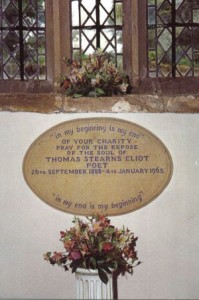
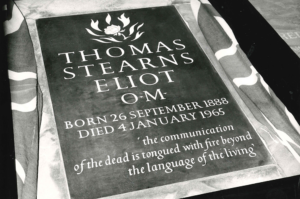 In 1967, on the second anniversary of his death, Eliot was commemorated by the placement of a large stone in the floor of Poets’ Corner in London’s Westminster Abbey. The stone, cut by designer Reynolds Stone, is inscribed with his life dates, his Order of Merit, and a quotation from his poem Little Gidding;
In 1967, on the second anniversary of his death, Eliot was commemorated by the placement of a large stone in the floor of Poets’ Corner in London’s Westminster Abbey. The stone, cut by designer Reynolds Stone, is inscribed with his life dates, his Order of Merit, and a quotation from his poem Little Gidding; On this day in 1986, Irish singer and musician who is best known for being the founding member, principal songwriter, lead vocalist and bassist of the Irish rock band Thin Lizzy, Phil Lynott died of pneumonia and heart failure due to sepsis in Salisbury District Hospital’s intensive care unit, at the age of 36. Born Philip Parris Lynott on 20 August 1949 in Hallam Hospital (now Sandwell General Hospital) in West Bromwich (then in Staffordshire), England. Lynott married Caroline Crowther (1980 – 1986 his death). Of course my favorite Thin Lizzy song is
On this day in 1986, Irish singer and musician who is best known for being the founding member, principal songwriter, lead vocalist and bassist of the Irish rock band Thin Lizzy, Phil Lynott died of pneumonia and heart failure due to sepsis in Salisbury District Hospital’s intensive care unit, at the age of 36. Born Philip Parris Lynott on 20 August 1949 in Hallam Hospital (now Sandwell General Hospital) in West Bromwich (then in Staffordshire), England. Lynott married Caroline Crowther (1980 – 1986 his death). Of course my favorite Thin Lizzy song is 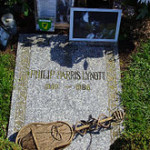
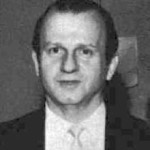 On this day in 1967, the man who shot and killed Lee Harvey Oswald, Jack Ruby died of a pulmonary embolism, secondary to bronchogenic carcinoma (lung cancer), at the age of 55 at Parkland Hospital in Dallas, where Oswald had died and where President John F. Kennedy had been pronounced dead after his assassination. Exactly what Ruby’s motive was for killing Oswald is a matter of conjecture. Some view him as a key player in a conspiracy plot while others view him merely as a publicity-seeker. Born Jacob Leon Rubenstein on 25 March 1911 in Chicago.
On this day in 1967, the man who shot and killed Lee Harvey Oswald, Jack Ruby died of a pulmonary embolism, secondary to bronchogenic carcinoma (lung cancer), at the age of 55 at Parkland Hospital in Dallas, where Oswald had died and where President John F. Kennedy had been pronounced dead after his assassination. Exactly what Ruby’s motive was for killing Oswald is a matter of conjecture. Some view him as a key player in a conspiracy plot while others view him merely as a publicity-seeker. Born Jacob Leon Rubenstein on 25 March 1911 in Chicago.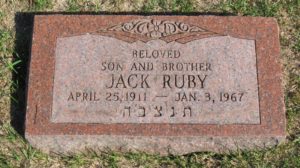
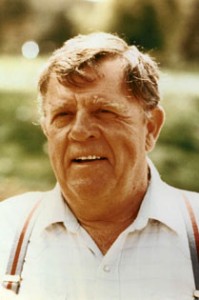 On this day in 2009, U.S. Navy veteran, Texas Longhorn and actor, Pat Hingle, died at his home in Carolina Beach, North Carolina at the age of 84. Born Martin Patterson Hingle on 19 July 1924 in Miami, Florida. Hingle enlisted in the U.S. Navy in December 1941, dropping out of the University of Texas. He served on the destroyer USS Marshall during World War II.
On this day in 2009, U.S. Navy veteran, Texas Longhorn and actor, Pat Hingle, died at his home in Carolina Beach, North Carolina at the age of 84. Born Martin Patterson Hingle on 19 July 1924 in Miami, Florida. Hingle enlisted in the U.S. Navy in December 1941, dropping out of the University of Texas. He served on the destroyer USS Marshall during World War II.  He returned to the University of Texas after the war and earned a degree in radio broadcasting. In my opinion, his finest performances were in two movies starring Clint Eastwood; Hang ’em High (1968) and Sudden Impact (1983). Hingle is also well know for his role as Commissioner Gordon in the Batman movies. He was married twice; Alyce Faye Dorsey (1947 – 1972 divorced) and Julia Wright (1979 – 2009 his death).
He returned to the University of Texas after the war and earned a degree in radio broadcasting. In my opinion, his finest performances were in two movies starring Clint Eastwood; Hang ’em High (1968) and Sudden Impact (1983). Hingle is also well know for his role as Commissioner Gordon in the Batman movies. He was married twice; Alyce Faye Dorsey (1947 – 1972 divorced) and Julia Wright (1979 – 2009 his death).
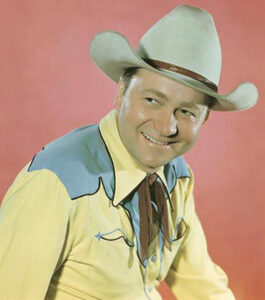

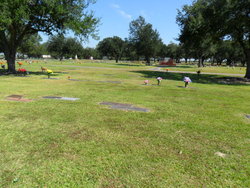
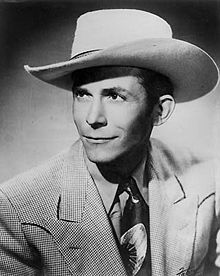 On this day in 1953, legendary singer-songwriter and American Icon, Luke the Drifter, Hank Williams, died in the back seat of a 1952 baby blue Cadillac convertible somewhere between Bristol, Virginia and Oak Hill, West Virginia, at the age of 29. Born Hiram King Williams on 17 September 1923 in Mount Olive, Alabama. Father of Hank Williams, Jr. and grandfather of Hank III. In my opinion, the greatest country music star of all time. His songs have been recorded by hundreds of other artists, many of whom have also had hits with the tunes, in a range including pop, gospel, blues and rock styles. My favorite Hank songs include; “Lovesick Blues”, “Long Gone Lonesome Blues”, “Why Don’t You Love Me”, “Moanin’ the Blues”, “Cold, Cold Heart”, “Hey Good Lookin'”, “Your Cheatin’ Heart”, “Take These Chains from My Heart”, “Move it on Over”, “Mind Your Own Business”, “Dear John”, “Crazy Heart”. Songs that pay tribute to Williams include; “The Ride” by David Allan Coe, “Hank Williams Said it Best” by Guy Clark, “The Night Hank Williams came to Town” by Johnny Cash and Waylon Jennings, “Are You sure Hank Done it this Way” by Jennings, “The Conversation” by Hank, Jr. and Jennings, “The Great Hank” by Robert Earl Keen, “If You Don’t Like Hank Williams” by Kris Kristofferson, and “I Feel like Hank Williams Tonight” by Jerry Jeff Walker. His band was called the Driftin Cowboys. Williams married twice; Audrey Sheppard (1943 – 1952 divorce) and Billie Jean Jones Eshlimar (1952 – 1953 his death). I created a real country music station on slacker.com called All Three Hanks.
On this day in 1953, legendary singer-songwriter and American Icon, Luke the Drifter, Hank Williams, died in the back seat of a 1952 baby blue Cadillac convertible somewhere between Bristol, Virginia and Oak Hill, West Virginia, at the age of 29. Born Hiram King Williams on 17 September 1923 in Mount Olive, Alabama. Father of Hank Williams, Jr. and grandfather of Hank III. In my opinion, the greatest country music star of all time. His songs have been recorded by hundreds of other artists, many of whom have also had hits with the tunes, in a range including pop, gospel, blues and rock styles. My favorite Hank songs include; “Lovesick Blues”, “Long Gone Lonesome Blues”, “Why Don’t You Love Me”, “Moanin’ the Blues”, “Cold, Cold Heart”, “Hey Good Lookin'”, “Your Cheatin’ Heart”, “Take These Chains from My Heart”, “Move it on Over”, “Mind Your Own Business”, “Dear John”, “Crazy Heart”. Songs that pay tribute to Williams include; “The Ride” by David Allan Coe, “Hank Williams Said it Best” by Guy Clark, “The Night Hank Williams came to Town” by Johnny Cash and Waylon Jennings, “Are You sure Hank Done it this Way” by Jennings, “The Conversation” by Hank, Jr. and Jennings, “The Great Hank” by Robert Earl Keen, “If You Don’t Like Hank Williams” by Kris Kristofferson, and “I Feel like Hank Williams Tonight” by Jerry Jeff Walker. His band was called the Driftin Cowboys. Williams married twice; Audrey Sheppard (1943 – 1952 divorce) and Billie Jean Jones Eshlimar (1952 – 1953 his death). I created a real country music station on slacker.com called All Three Hanks. 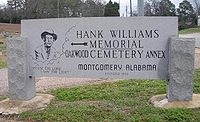
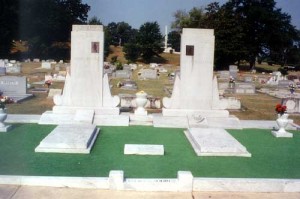 Hank’s grave is a granite cowboy hat on a granite base inscribed with; LUKE THE DRIFTER, MEN WITH BROKEN HEARTS, I JUST TOLD MAMA GOODBY. Between the graves is a granite tablet with the following inscription: PLEASE DO NOT DESECRATE THIS SACRED SPOT. MANY THANKS HANK WILLIAMS, JR. A life size bronze statue has been erected adjacent to the Montgomery City Hall, the site of many of his concerts and his funeral.
Hank’s grave is a granite cowboy hat on a granite base inscribed with; LUKE THE DRIFTER, MEN WITH BROKEN HEARTS, I JUST TOLD MAMA GOODBY. Between the graves is a granite tablet with the following inscription: PLEASE DO NOT DESECRATE THIS SACRED SPOT. MANY THANKS HANK WILLIAMS, JR. A life size bronze statue has been erected adjacent to the Montgomery City Hall, the site of many of his concerts and his funeral.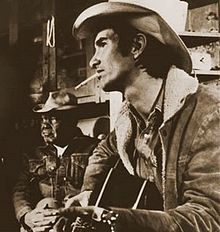 On this day in 1997, singer, songwriter, Townes Van Zandt died from a heart attack at his home in Smyrna, Tennessee at the age of 52. Born John Townes Van Zandt on 7 March 1944 in Fort Worth, Texas. Many of his songs, including “If I Needed You” and “To Live Is to Fly”, are considered standards. Van Zandt had a devoted fanbase, but he never had a successful album or single. In 1983, six years after Emmylou Harris had first popularized it, Willie Nelson and Merle Haggard covered his song “Pancho and Lefty,” scoring a number one hit on the Billboard country music charts. Van Zandt was notorious for his drug addictions and alcoholism. Van Zandt married three times; Fran Petters (1965 – 1970 divorce), Cindy Morgan (1978 – 1983 divorce), and Jeanene Munsell (1983 – 1994).
On this day in 1997, singer, songwriter, Townes Van Zandt died from a heart attack at his home in Smyrna, Tennessee at the age of 52. Born John Townes Van Zandt on 7 March 1944 in Fort Worth, Texas. Many of his songs, including “If I Needed You” and “To Live Is to Fly”, are considered standards. Van Zandt had a devoted fanbase, but he never had a successful album or single. In 1983, six years after Emmylou Harris had first popularized it, Willie Nelson and Merle Haggard covered his song “Pancho and Lefty,” scoring a number one hit on the Billboard country music charts. Van Zandt was notorious for his drug addictions and alcoholism. Van Zandt married three times; Fran Petters (1965 – 1970 divorce), Cindy Morgan (1978 – 1983 divorce), and Jeanene Munsell (1983 – 1994). 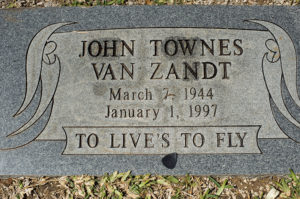
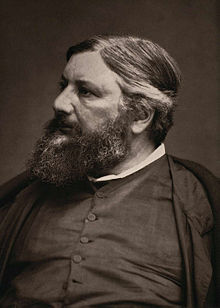 On this day in 1877 painter Gustave Courbet died in La Tour-de-Peilz, Switzerland, of liver disease aggravated by heavy drinking at the age of 58. Born Jean Désiré Gustave Courbet on 10 June 1819 in Ornans (department of Doubs), France. Courbet led the Realist movement in 19th-century French painting. Committed to painting only what he could see, he rejected academic convention and the Romanticism of the previous generation of visual artists. His independence set an example that was important to later artists, such as the Impressionists and the Cubists. Courbet occupies an important place in 19th-century French painting as an innovator and as an artist willing to make bold social statements through his work. Courbet’s paintings of the late 1840s and early 1850s brought him his first recognition. They challenged convention by depicting unidealized peasants and workers, often on a grand scale traditionally reserved for paintings of religious or historical subjects. Courbet’s subsequent paintings were mostly of a less overtly political character: landscapes, seascapes, hunting scenes, and nudes. He was imprisoned for six months in 1871 for his involvement with the Paris Commune, and lived in exile in Switzerland from 1873 until his death.
On this day in 1877 painter Gustave Courbet died in La Tour-de-Peilz, Switzerland, of liver disease aggravated by heavy drinking at the age of 58. Born Jean Désiré Gustave Courbet on 10 June 1819 in Ornans (department of Doubs), France. Courbet led the Realist movement in 19th-century French painting. Committed to painting only what he could see, he rejected academic convention and the Romanticism of the previous generation of visual artists. His independence set an example that was important to later artists, such as the Impressionists and the Cubists. Courbet occupies an important place in 19th-century French painting as an innovator and as an artist willing to make bold social statements through his work. Courbet’s paintings of the late 1840s and early 1850s brought him his first recognition. They challenged convention by depicting unidealized peasants and workers, often on a grand scale traditionally reserved for paintings of religious or historical subjects. Courbet’s subsequent paintings were mostly of a less overtly political character: landscapes, seascapes, hunting scenes, and nudes. He was imprisoned for six months in 1871 for his involvement with the Paris Commune, and lived in exile in Switzerland from 1873 until his death. 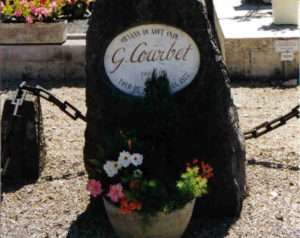
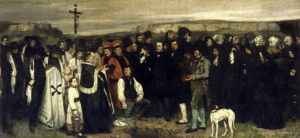

 Self-portrait, 1842
Self-portrait, 1842

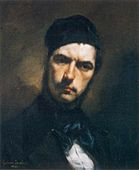



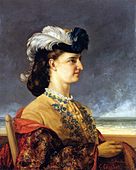











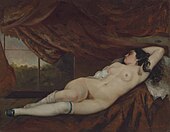



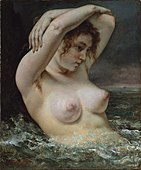










 On this day in 1972, baseball player, United States Marine Corp Reserve, humanitarian, 15x All-Star, 2x World Series Champion, 12x Gold Glove Award winner, 4x NL batting champion, Hall of Famer, Pittsburgh Pirate, #21, Roberto Clemente died in a plane crash off the coast of Isla Verde, Puerto Rico, while in route to deliver aid to earthquake victims in Nicaragua, at the age of 38. Born Roberto Clemente Walker on 18 August 1934 in barrio San Antón, Carolina, Puerto Rico. Clemente was a right fielder who played 18 seasons for the Pirates from 1955 through 1972. He was a National League, Most Valuable Player once. In 1972, Clemente got his 3,000th major league hit. Clemente was involved in charity work in Puerto Rico and Latin American countries during the off seasons, often delivering baseball equipment and food to those in need. Clemente was inducted posthumously to the National Baseball Hall of Fame in 1973, becoming the first Latin American to be enshrined. He was also one of only two Hall of Fame members for whom the mandatory five-year waiting period had been waived, the other being Lou Gehrig in 1939. Clemente is the first Latino player to win a World Series as a starter (1960), to receive a National League MVP Award (1966) (Zoilo Versalles won the AL MVP IN ’65,) and to receive a World Series MVP Award (1971).
On this day in 1972, baseball player, United States Marine Corp Reserve, humanitarian, 15x All-Star, 2x World Series Champion, 12x Gold Glove Award winner, 4x NL batting champion, Hall of Famer, Pittsburgh Pirate, #21, Roberto Clemente died in a plane crash off the coast of Isla Verde, Puerto Rico, while in route to deliver aid to earthquake victims in Nicaragua, at the age of 38. Born Roberto Clemente Walker on 18 August 1934 in barrio San Antón, Carolina, Puerto Rico. Clemente was a right fielder who played 18 seasons for the Pirates from 1955 through 1972. He was a National League, Most Valuable Player once. In 1972, Clemente got his 3,000th major league hit. Clemente was involved in charity work in Puerto Rico and Latin American countries during the off seasons, often delivering baseball equipment and food to those in need. Clemente was inducted posthumously to the National Baseball Hall of Fame in 1973, becoming the first Latin American to be enshrined. He was also one of only two Hall of Fame members for whom the mandatory five-year waiting period had been waived, the other being Lou Gehrig in 1939. Clemente is the first Latino player to win a World Series as a starter (1960), to receive a National League MVP Award (1966) (Zoilo Versalles won the AL MVP IN ’65,) and to receive a World Series MVP Award (1971).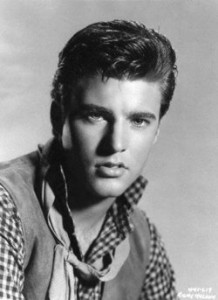 On this day in 1985, singer-songwriter, musician, and actor, Ricky Nelson, died in De Kalb, Texas at the age of 45. Born Eric Hilliard Nelson on 8 May 1940 in Teaneck, New Jersey. Most probably remember him best as Ozzie and Harriet Nelson’s son and the show The Adventures of Ozzie and Harriet or for his hit songs. I remember him best in his role as Colorado from the Howard Hawk‘s movie Rio Bravo starring John Wayne, Dean Martin and Walter Brennan. The day after Christmas 1985, Nelson and his band left for a three-stop tour of the Southern United States. Following shows in Orlando, Florida and Guntersville, Alabama, Nelson and band members boarded a vintage DC-3 in Guntersville and took off for a New Year’s Eve extravaganza in Dallas, Texas. The plane crashed northeast of Dallas in De Kalb. Seven were killed: Nelson and his fiancée, Helen Blair; bassist Patrick Woodward; drummer Rick Intveld; keyboardist Andy Chapin; guitarist Bobby Neal; and road manager/soundman Donald Clark Russell. Nelson was married once to Sharon Kristin Harmon (1963 – 1982 divorce).
On this day in 1985, singer-songwriter, musician, and actor, Ricky Nelson, died in De Kalb, Texas at the age of 45. Born Eric Hilliard Nelson on 8 May 1940 in Teaneck, New Jersey. Most probably remember him best as Ozzie and Harriet Nelson’s son and the show The Adventures of Ozzie and Harriet or for his hit songs. I remember him best in his role as Colorado from the Howard Hawk‘s movie Rio Bravo starring John Wayne, Dean Martin and Walter Brennan. The day after Christmas 1985, Nelson and his band left for a three-stop tour of the Southern United States. Following shows in Orlando, Florida and Guntersville, Alabama, Nelson and band members boarded a vintage DC-3 in Guntersville and took off for a New Year’s Eve extravaganza in Dallas, Texas. The plane crashed northeast of Dallas in De Kalb. Seven were killed: Nelson and his fiancée, Helen Blair; bassist Patrick Woodward; drummer Rick Intveld; keyboardist Andy Chapin; guitarist Bobby Neal; and road manager/soundman Donald Clark Russell. Nelson was married once to Sharon Kristin Harmon (1963 – 1982 divorce). 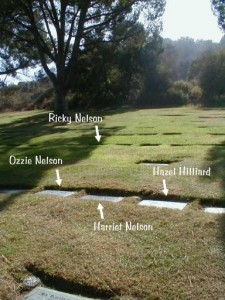
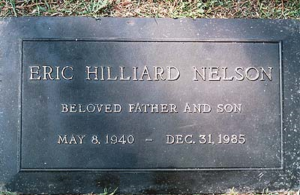
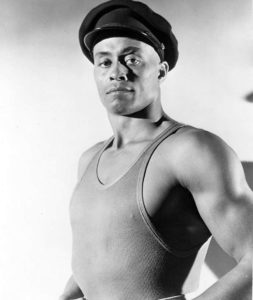 On this day in 1994, athlete, U. S. Army veteran, and actor Woody Strode died of lung cancer in Glendora, California, aged 80. Born Woodrow Wilson Woolwine Strode on July 25, 1914 in Los Angeles. He was a decathlete and football star who was one of the first African American players in the National Football League in the postwar era. After football, he went on to become a film actor, where he was nominated for a Golden Globe Award for Best Supporting Actor for his role in Spartacus in 1960.
On this day in 1994, athlete, U. S. Army veteran, and actor Woody Strode died of lung cancer in Glendora, California, aged 80. Born Woodrow Wilson Woolwine Strode on July 25, 1914 in Los Angeles. He was a decathlete and football star who was one of the first African American players in the National Football League in the postwar era. After football, he went on to become a film actor, where he was nominated for a Golden Globe Award for Best Supporting Actor for his role in Spartacus in 1960.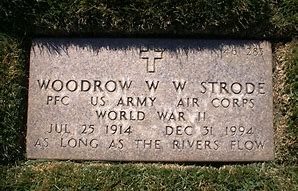 The Final Footprint
The Final Footprint On this day in 2015, singer, songwriter, actress, Natalie Cole died at the age of 65 at Cedars-Sinai Medical Center in Los Angeles, California, due to congestive heart failure. Born Natalie Maria Cole on February 6, 1950 at Cedars of Lebanon Hospital in Los Angeles, the daughter of Nat King Cole and former Duke Ellington Orchestra singer Maria Hawkins Ellington, and raised in the affluent Hancock Park district of Los Angeles. She rose to musical success in the mid-1970s as an R&B artist with the hits “This Will Be”, “Inseparable” (1975), and “Our Love” (1977). Cole re-emerged as a pop artist with the 1987 album Everlasting and her cover of Bruce Springsteen’s “Pink Cadillac”. In the 1990s, she re-recorded standards by her father, resulting in her biggest success, Unforgettable… with Love, which sold over seven million copies and also won Cole seven Grammy Awards.
On this day in 2015, singer, songwriter, actress, Natalie Cole died at the age of 65 at Cedars-Sinai Medical Center in Los Angeles, California, due to congestive heart failure. Born Natalie Maria Cole on February 6, 1950 at Cedars of Lebanon Hospital in Los Angeles, the daughter of Nat King Cole and former Duke Ellington Orchestra singer Maria Hawkins Ellington, and raised in the affluent Hancock Park district of Los Angeles. She rose to musical success in the mid-1970s as an R&B artist with the hits “This Will Be”, “Inseparable” (1975), and “Our Love” (1977). Cole re-emerged as a pop artist with the 1987 album Everlasting and her cover of Bruce Springsteen’s “Pink Cadillac”. In the 1990s, she re-recorded standards by her father, resulting in her biggest success, Unforgettable… with Love, which sold over seven million copies and also won Cole seven Grammy Awards.

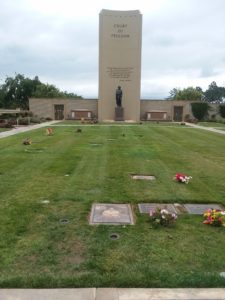
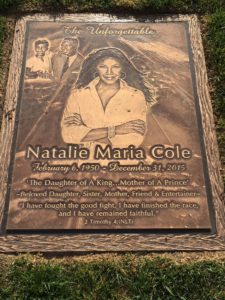 The Final Footprint
The Final Footprint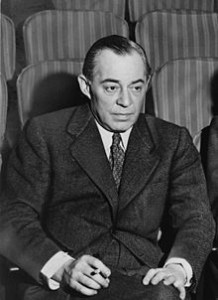 On this day in 1979, composer of music and one of only two people to win an Emmy, a Grammy, an Oscar, a Tony and a Pulitzer Prize, Richard Rodgers, died in New York City at the age of 77. Born Richard Charles Rodgers into a German Jewish family in Arverne, Queens, New York on 28 June 1902. He is best known for his songwriting partnerships with the lyricists Lorenz Hart and Oscar Hammerstein II. Rodgers composed music for more than 900 songs, for 43 Broadway musicals, films and television. My favorite Rodgers and Hart songs are; “Blue Moon”, “The Most Beautiful Girl in the World”, “My Funny Valentine”, “The Lady is a Tramp”, “Falling in Love with Love”, “Bewitched, Bothered and Bewildered”. My favorite Rodgers and Hammerstein songs are; “Oh, What a Beautiful Mornin'”, “People Will Say We’re in Love”, “If I Loved You”, “You’ll Never Walk Alone”, “It Might as Well Be Spring”, “Some Enchanted Evening”, “Getting to Know You”, “My Favorite Things”, “The Sound of Music”, “Climb Ev’ry Mountain. In 1930, Rodgers married Dorothy Belle Feiner. The other person with an EGOTP is Marvin Hamlisch.
On this day in 1979, composer of music and one of only two people to win an Emmy, a Grammy, an Oscar, a Tony and a Pulitzer Prize, Richard Rodgers, died in New York City at the age of 77. Born Richard Charles Rodgers into a German Jewish family in Arverne, Queens, New York on 28 June 1902. He is best known for his songwriting partnerships with the lyricists Lorenz Hart and Oscar Hammerstein II. Rodgers composed music for more than 900 songs, for 43 Broadway musicals, films and television. My favorite Rodgers and Hart songs are; “Blue Moon”, “The Most Beautiful Girl in the World”, “My Funny Valentine”, “The Lady is a Tramp”, “Falling in Love with Love”, “Bewitched, Bothered and Bewildered”. My favorite Rodgers and Hammerstein songs are; “Oh, What a Beautiful Mornin'”, “People Will Say We’re in Love”, “If I Loved You”, “You’ll Never Walk Alone”, “It Might as Well Be Spring”, “Some Enchanted Evening”, “Getting to Know You”, “My Favorite Things”, “The Sound of Music”, “Climb Ev’ry Mountain. In 1930, Rodgers married Dorothy Belle Feiner. The other person with an EGOTP is Marvin Hamlisch.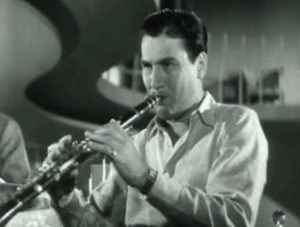 On this day in 2004, clarinetist, composer, bandleader, actor, and writer Artie Shaw died in Thousand Oaks, California at the age of 94. Born Arthur Jacob Arshawsky on May 23, 1910 in New York City. In my opinion, one of jazz’s finest clarinetists, Shaw led one of the United States’ most popular big bands in the late 1930s through the early 1940s. Perhaps best known for his 1938 recording of Cole Porter’s “Begin the Beguine”. Before the release of “Beguine”, Shaw and his band had languished in obscurity for over two years. After its release, he became a major pop artist. The record eventually became one of the era’s defining recordings. Musically restless, Shaw was also an early proponent of what became known much later as Third Stream music, which blended elements of classical and jazz forms and traditions. His music influenced other musicians, such as John Barry in England, with the vamp of the James Bond Theme, possibly influenced by “Nightmare”, which also has a similar vamp to Kurt Weill’s “Lonely House”.
On this day in 2004, clarinetist, composer, bandleader, actor, and writer Artie Shaw died in Thousand Oaks, California at the age of 94. Born Arthur Jacob Arshawsky on May 23, 1910 in New York City. In my opinion, one of jazz’s finest clarinetists, Shaw led one of the United States’ most popular big bands in the late 1930s through the early 1940s. Perhaps best known for his 1938 recording of Cole Porter’s “Begin the Beguine”. Before the release of “Beguine”, Shaw and his band had languished in obscurity for over two years. After its release, he became a major pop artist. The record eventually became one of the era’s defining recordings. Musically restless, Shaw was also an early proponent of what became known much later as Third Stream music, which blended elements of classical and jazz forms and traditions. His music influenced other musicians, such as John Barry in England, with the vamp of the James Bond Theme, possibly influenced by “Nightmare”, which also has a similar vamp to Kurt Weill’s “Lonely House”.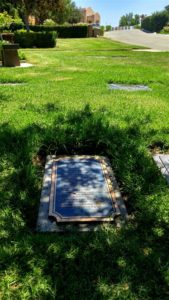
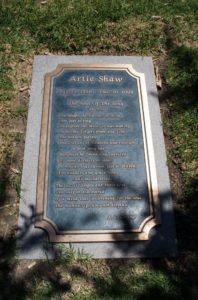 The Final Footprint
The Final Footprint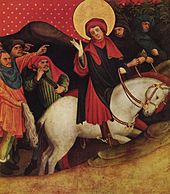

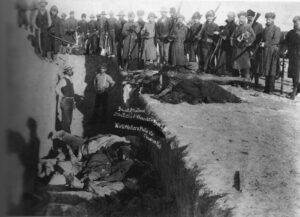
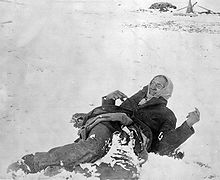


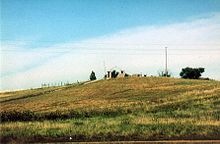
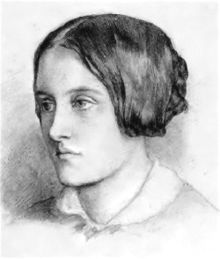 On this day in 1894, poet Christina Rossetti died in Torrington Square, Bloomsbury, London at the age of 64. Born Christina Georgina Rossetti at 38 Charlotte Street (now 105 Hallam Street), London to Gabriele Rossetti, a poet and a political exile from Vasto, Abruzzo, and Frances Polidori, the sister of Lord Byron‘s friend and physician, John William Polidori.
On this day in 1894, poet Christina Rossetti died in Torrington Square, Bloomsbury, London at the age of 64. Born Christina Georgina Rossetti at 38 Charlotte Street (now 105 Hallam Street), London to Gabriele Rossetti, a poet and a political exile from Vasto, Abruzzo, and Frances Polidori, the sister of Lord Byron‘s friend and physician, John William Polidori.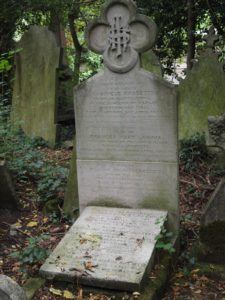
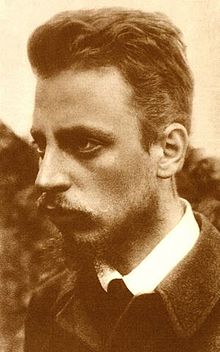 And on this day in 1926, poet and novelist
And on this day in 1926, poet and novelist 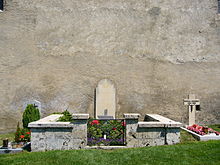 The Final Footprint – Rilke was interred on 2 January 1927 in the Raron cemetery to the west of Visp. Rilke had chosen as his own epitaph this poem:
The Final Footprint – Rilke was interred on 2 January 1927 in the Raron cemetery to the west of Visp. Rilke had chosen as his own epitaph this poem: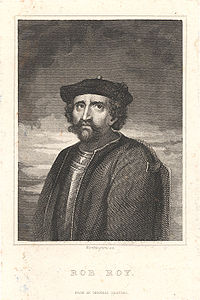 On this day in 1734, Scottish folk hero, cattleman, outlaw, the Scottish Robin Hood, Red MacGregor, Rob Roy, died at his house in Inverlochlarig Beg, Balquhidder, Scotland, at the age of 63. Born Robert Roy MacGregor at Glengyle, Scotland at the age of 63. Baptised 7 March 1671. Rob Roy is anglicised from the Scottish Gaelic Raibeart Ruadh, or Red Robert. This is because Rob Roy had red hair, though it darkened to auburn in later life. His father was Donald MacGregor, and his mother Margaret Campbell. He later met Mary Helen MacGregor of Comar, who was born at Leny Farm, Strathyre, and they were married in Glenarklet in January 1693. She bore him four sons: James (known as Mor or Tall), Ranald, Coll, and Robert (known as Robin Oig or Young Rob). Rob Roy together with his father joined the Jacobite rising led by Viscount Dundee, Bonnie Dundee, to support the Stuart King James who had been deposed by William of Orange.
On this day in 1734, Scottish folk hero, cattleman, outlaw, the Scottish Robin Hood, Red MacGregor, Rob Roy, died at his house in Inverlochlarig Beg, Balquhidder, Scotland, at the age of 63. Born Robert Roy MacGregor at Glengyle, Scotland at the age of 63. Baptised 7 March 1671. Rob Roy is anglicised from the Scottish Gaelic Raibeart Ruadh, or Red Robert. This is because Rob Roy had red hair, though it darkened to auburn in later life. His father was Donald MacGregor, and his mother Margaret Campbell. He later met Mary Helen MacGregor of Comar, who was born at Leny Farm, Strathyre, and they were married in Glenarklet in January 1693. She bore him four sons: James (known as Mor or Tall), Ranald, Coll, and Robert (known as Robin Oig or Young Rob). Rob Roy together with his father joined the Jacobite rising led by Viscount Dundee, Bonnie Dundee, to support the Stuart King James who had been deposed by William of Orange. 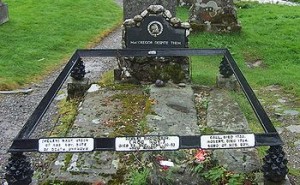
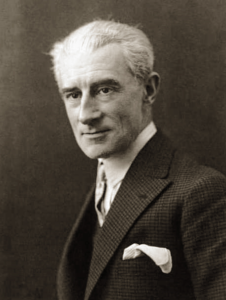 On this day in 1937, composer, pianist and conductor Maurice Ravel died in Paris at the age of 62. Born Joseph Maurice Ravel on 7 March 1875 in the Basque town of Ciboure, France, near Biarritz. He is often associated with impressionism along with his elder contemporary Claude Debussy, although both composers rejected the term. In the 1920s and 1930s Ravel was internationally regarded as France’s greatest living composer.
On this day in 1937, composer, pianist and conductor Maurice Ravel died in Paris at the age of 62. Born Joseph Maurice Ravel on 7 March 1875 in the Basque town of Ciboure, France, near Biarritz. He is often associated with impressionism along with his elder contemporary Claude Debussy, although both composers rejected the term. In the 1920s and 1930s Ravel was internationally regarded as France’s greatest living composer.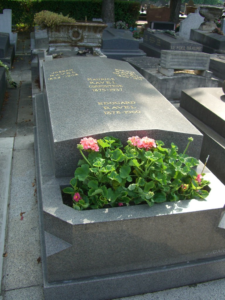
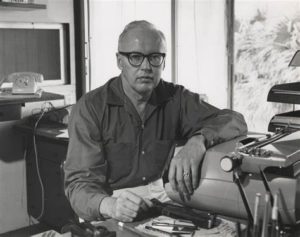 On this day in 1986, writer of novels and short stories John D. MacDonald died following complications of coronary artery bypass surgery in St. Mary’s Hospital in Milwaukee, Wisconsin, at the age of 70. Born John Dann MacDonald on July 24, 1916 in Sharon, Pennsylvania. MacDonald was a prolific author of crime and suspense novels, many of them set in his adopted home of Florida. Perhaps best known for his popular and critically acclaimed Travis McGee series, and his 1957 novel The Executioners, which was filmed as Cape Fear (1962) and remade in 1991.
On this day in 1986, writer of novels and short stories John D. MacDonald died following complications of coronary artery bypass surgery in St. Mary’s Hospital in Milwaukee, Wisconsin, at the age of 70. Born John Dann MacDonald on July 24, 1916 in Sharon, Pennsylvania. MacDonald was a prolific author of crime and suspense novels, many of them set in his adopted home of Florida. Perhaps best known for his popular and critically acclaimed Travis McGee series, and his 1957 novel The Executioners, which was filmed as Cape Fear (1962) and remade in 1991.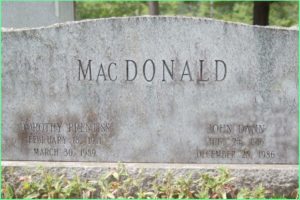 The Final Footprint
The Final Footprint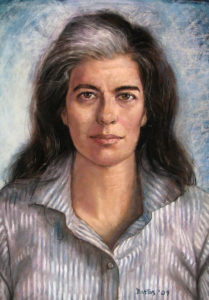 On this day in 2004, writer, filmmaker, philosopher, teacher, and political activist Susan Sontag died from complications of myelodysplastic syndrome in New York City, at the age of 71. Born Susan Rosenblatt in New York City on January 16, 1933. She mostly wrote essays, but also published novels; she published her first major work, the essay “Notes on ‘Camp'”, in 1964. Perhaps her best-known works include On Photography, Against Interpretation, Styles of Radical Will, The Way We Live Now, Illness as Metaphor, Regarding the Pain of Others, The Volcano Lover, and In America.
On this day in 2004, writer, filmmaker, philosopher, teacher, and political activist Susan Sontag died from complications of myelodysplastic syndrome in New York City, at the age of 71. Born Susan Rosenblatt in New York City on January 16, 1933. She mostly wrote essays, but also published novels; she published her first major work, the essay “Notes on ‘Camp'”, in 1964. Perhaps her best-known works include On Photography, Against Interpretation, Styles of Radical Will, The Way We Live Now, Illness as Metaphor, Regarding the Pain of Others, The Volcano Lover, and In America.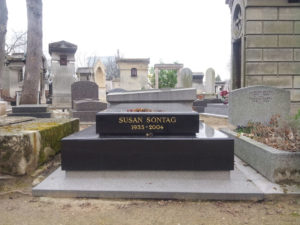 The Final Footprint
The Final Footprint On this day in 2015, musician, singer-songwriter, founder and frontman for Motörhead, Lemmy died at his apartment in Los Angeles at 4pm PST, from prostate cancer, congestive heart failure, and cardiac arrhythmia at the age of 70. Born Ian Fraser Kilmister on 24 December 1945 in Stoke-on-Trent, Staffordshire, England, United Kingdom. In my opinion, their music was one of the foundations of the heavy metal genre. He was known for his appearance (including his friendly mutton chops), and his distinctive gravelly, raspy singing voice. He was also known for his unmistakable bass playing style, using a Rickenbacker bass and over-driven Marshall tube bass stacks. Alongside his music career, he also had many minor roles and cameo appearances in film and television.
On this day in 2015, musician, singer-songwriter, founder and frontman for Motörhead, Lemmy died at his apartment in Los Angeles at 4pm PST, from prostate cancer, congestive heart failure, and cardiac arrhythmia at the age of 70. Born Ian Fraser Kilmister on 24 December 1945 in Stoke-on-Trent, Staffordshire, England, United Kingdom. In my opinion, their music was one of the foundations of the heavy metal genre. He was known for his appearance (including his friendly mutton chops), and his distinctive gravelly, raspy singing voice. He was also known for his unmistakable bass playing style, using a Rickenbacker bass and over-driven Marshall tube bass stacks. Alongside his music career, he also had many minor roles and cameo appearances in film and television.

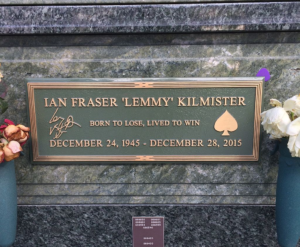 The Final Footprint
The Final Footprint 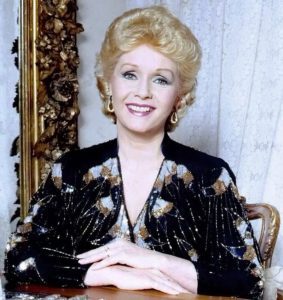 On this day in 2016, actress, singer, businesswoman, film historian, and humanitarian Debbie Reynolds died the day after her daughter Carrie Fisher, from a stroke at Cedars-Sinai Medical Center in Los Angeles at the age of 84. Born Mary Frances Reynolds on April 1, 1932 in El Paso, Texas. With a career spanning almost 70 years, She was nominated for the Golden Globe Award for Most Promising Newcomer for her portrayal of Helen Kane in the 1950 film Three Little Words, and her breakout role was her first leading role, as Kathy Selden in Singin’ in the Rain (1952). Other successes include The Affairs of Dobie Gillis (1953), Susan Slept Here (1954), Bundle of Joy (1956 Golden Globe nomination), The Catered Affair (1956 National Board of Review Best Supporting Actress Winner), and Tammy and the Bachelor (1957), in which her performance of the song “Tammy” reached number one on the Billboard music charts. In 1959, she released her first pop music album, titled Debbie.
On this day in 2016, actress, singer, businesswoman, film historian, and humanitarian Debbie Reynolds died the day after her daughter Carrie Fisher, from a stroke at Cedars-Sinai Medical Center in Los Angeles at the age of 84. Born Mary Frances Reynolds on April 1, 1932 in El Paso, Texas. With a career spanning almost 70 years, She was nominated for the Golden Globe Award for Most Promising Newcomer for her portrayal of Helen Kane in the 1950 film Three Little Words, and her breakout role was her first leading role, as Kathy Selden in Singin’ in the Rain (1952). Other successes include The Affairs of Dobie Gillis (1953), Susan Slept Here (1954), Bundle of Joy (1956 Golden Globe nomination), The Catered Affair (1956 National Board of Review Best Supporting Actress Winner), and Tammy and the Bachelor (1957), in which her performance of the song “Tammy” reached number one on the Billboard music charts. In 1959, she released her first pop music album, titled Debbie.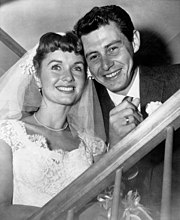
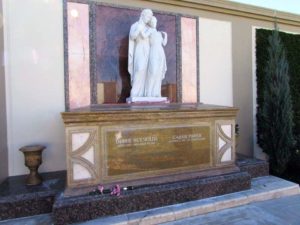 The Final Footprint
The Final Footprint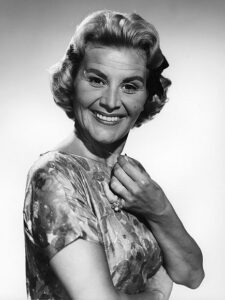 On this day in 2017 actress, singer, comedian, and vaudeville performer with a career ultimately spanning nine decades, which included film, radio, records, theater, night clubs and television, Rose Marie died at her home in the Van Nuys neighborhood of Los Angeles at the age of 94 . Born Rose Marie Mazzetta in Manhattan, New York, on August 15, 1923.
On this day in 2017 actress, singer, comedian, and vaudeville performer with a career ultimately spanning nine decades, which included film, radio, records, theater, night clubs and television, Rose Marie died at her home in the Van Nuys neighborhood of Los Angeles at the age of 94 . Born Rose Marie Mazzetta in Manhattan, New York, on August 15, 1923. The Final Footprint
The Final Footprint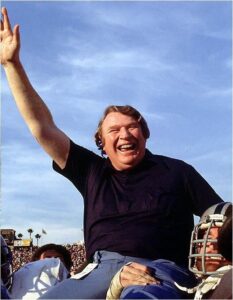 And on this day in 2021, American football coach and sports commentator in the National Football League (NFL) John Madden died in Pleasanton, California, aged 85. Born John Earl Madden in Austin, Minnesota on April 10, 1936.
And on this day in 2021, American football coach and sports commentator in the National Football League (NFL) John Madden died in Pleasanton, California, aged 85. Born John Earl Madden in Austin, Minnesota on April 10, 1936.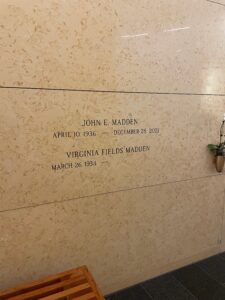 The Final Footprint
The Final Footprint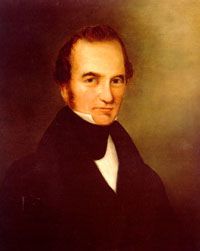 On this day in 1836, empresario, The Father of Texas, Stephen F. Austin died of pneumonia at noon at the home of George B. McKinstry right outside of what is now West Columbia, Texas. Born Stephen Fuller Austin in the mining region of southwestern Virginia (Wythe County) in what is now known as Austinville, some 256 miles (412 km) southwest of Richmond, Virginia. Austin led the second, and ultimately successful, colonization of Texas by bringing 300 families from the United States. Austin never married. On 10 June 1836, Austin was in New Orleans, where he received word of Santa Anna‘s defeat by Sam Houston at the Battle of San Jacinto. On August 4, Ausitn announced his candidacy for president of Texas. He felt confident he could win the election until two weeks before the election, when on August 20, Houston entered the race. Houston went on to win the election.
On this day in 1836, empresario, The Father of Texas, Stephen F. Austin died of pneumonia at noon at the home of George B. McKinstry right outside of what is now West Columbia, Texas. Born Stephen Fuller Austin in the mining region of southwestern Virginia (Wythe County) in what is now known as Austinville, some 256 miles (412 km) southwest of Richmond, Virginia. Austin led the second, and ultimately successful, colonization of Texas by bringing 300 families from the United States. Austin never married. On 10 June 1836, Austin was in New Orleans, where he received word of Santa Anna‘s defeat by Sam Houston at the Battle of San Jacinto. On August 4, Ausitn announced his candidacy for president of Texas. He felt confident he could win the election until two weeks before the election, when on August 20, Houston entered the race. Houston went on to win the election.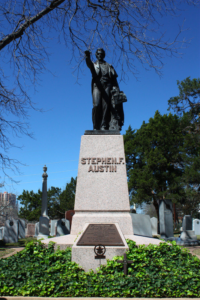 The Final Footprint
The Final Footprint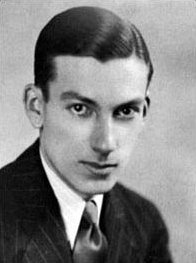 On this day in 1981, Oscar-winning composer, pianist, singer, actor, and bandleader, Hoagy Carmichael, died from a heart attack in Rancho Mirage, California at the age of 82. Born Hoagland Howard Carmichael on 22 November 1899 in Bloomington, Indiana. He is best known for writing the music to “Stardust”, “Georgia On My Mind”, “The Nearness of You”, and “Heart and Soul”, four of the most-recorded American songs of all time. In my opinion, Carmichael was one of the most talented, inventive, sophisticated and jazz-oriented of the hundreds of writers composing pop songs in the first half of the 20th century. The Oscar was awarded for “In the Cool, Cool, Cool, of the Evening”, lyrics by Johnny Mercer. Carmichael attended Indiana University and the Indiana University School of Law, where he received his Bachelor’s degree in 1925 and a law degree in 1926. He married twice; Ruth Menardi in 1935 and Dorothy Wanda McKay in 1977.
On this day in 1981, Oscar-winning composer, pianist, singer, actor, and bandleader, Hoagy Carmichael, died from a heart attack in Rancho Mirage, California at the age of 82. Born Hoagland Howard Carmichael on 22 November 1899 in Bloomington, Indiana. He is best known for writing the music to “Stardust”, “Georgia On My Mind”, “The Nearness of You”, and “Heart and Soul”, four of the most-recorded American songs of all time. In my opinion, Carmichael was one of the most talented, inventive, sophisticated and jazz-oriented of the hundreds of writers composing pop songs in the first half of the 20th century. The Oscar was awarded for “In the Cool, Cool, Cool, of the Evening”, lyrics by Johnny Mercer. Carmichael attended Indiana University and the Indiana University School of Law, where he received his Bachelor’s degree in 1925 and a law degree in 1926. He married twice; Ruth Menardi in 1935 and Dorothy Wanda McKay in 1977. 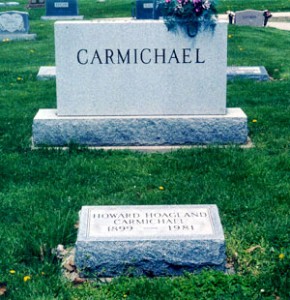

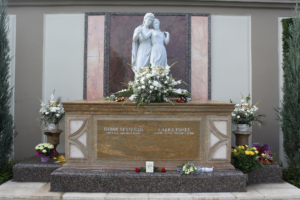 The Final Footprint
The Final Footprint 